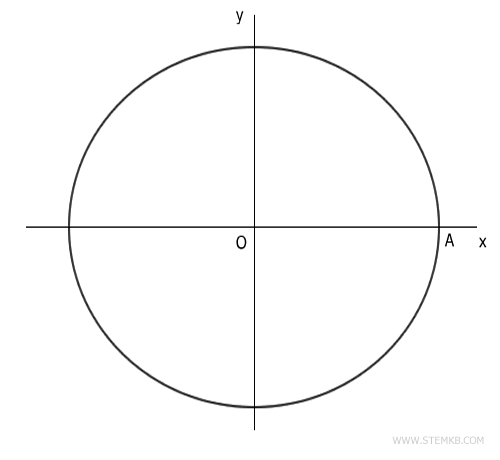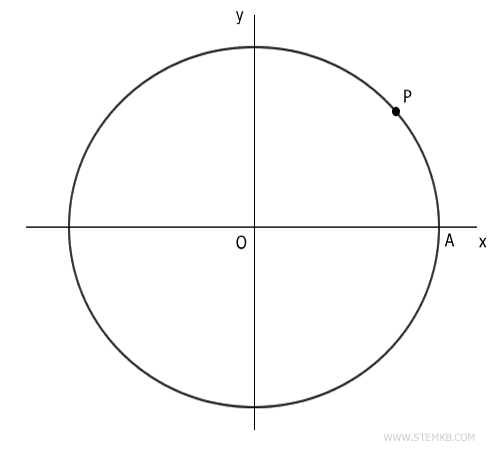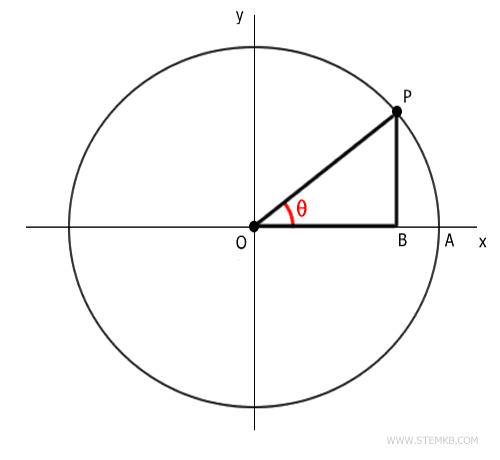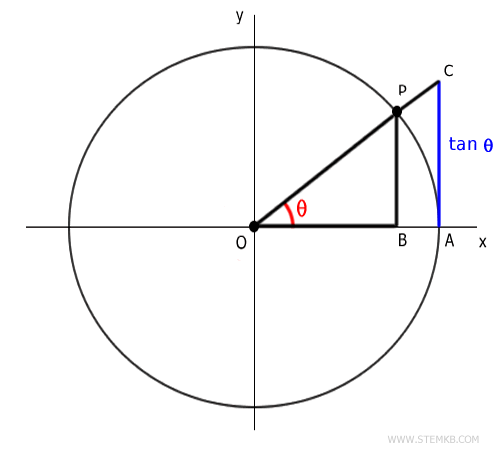
Tangent Function
Trigonometry introduces various interesting functions, including the important tangent. Alongside the sine and cosine, it plays a fundamental role in trigonometry.
Now, you might be asking, what's the deal with the tangent?
Picture a right-angled triangle. The tangent of an angle within this triangle is calculated as the ratio of the length of the side directly opposite the angle to the length of the side lying adjacent to it. We denote the tangent of an angle θ as either tan(θ) or tg(θ). The formula is as follows: $$ \tan(θ) = \frac{ \text{opposite side} }{ \text{adjacent side} } $$ The tangent can span from negative to positive infinity, and its pattern reoccurs every 180 degrees.
For a real-world example, consider a right-angled triangle with one angle measuring 45 degrees.
If both the side opposite this angle and the adjacent side measure 10 cm, the tangent of the 45-degree angle is given by:
$$ \tan(45°) = \frac{ 10 }{ 10 } = 1 $$
This example demonstrates how the tangent of an angle can embody any real value, depending on the angle's position within the triangle.
Let's delve into a practical application.
Envision a circle with a central point O and a unit radius (OA).

On this circle, pick a random point P.

This point, P, forms a right-angled triangle when connected to the center of the circle, O.

If we examine the angle θ,

we can note that the tangent is the ratio between the side opposite the angle (BP) and the side adjacent to it (OB).
$$ \tan(θ) = \frac{\overline{BP}}{ \overline{OB} } $$
Interestingly, segment BP corresponds to the sine of the angle while segment OB equates to the cosine of the angle.
$$ \overline{BP} = \sin θ $$
$$ \overline{OB} = \cos θ $$
From this, it's evident that the tangent can also be rewritten in the equivalent form of the fundamental trigonometric identity:
$$ \tan(θ) = \frac{\sin θ}{ \cos θ} $$
Looking at it geometrically, the tangent is equivalent to the length of segment AC.

When the angle lies between 0 and 90 degrees, the tangent is a positive number. However, for angles between 90 and 180 degrees, the tangent assumes a negative value.
Interestingly, when the angle is precisely 90 degrees, the tangent takes on an undefined value.
The tangent function follows a periodic pattern, repeating its values at regular intervals. In fact, the period of the tangent is 180 degrees (or π radians). This implies that the value of the tangent for an angle is the same as that for an angle 180 degrees more or less.
For instance, the tangent of a 30-degree angle is identical to that of a 210-degree angle, given that 210 is the sum of 30 and 180.
A crucial point to note is that the tangent of an angle θ is dimensionless. This is because it is a ratio of two lengths and remains unchanged regardless of the size of the circle.
With its wide-ranging applications in the scientific field, mastering the concept of the tangent is of fundamental importance in trigonometry. This function provides us with invaluable insights and problem-solving capabilities, making it a truly essential tool in our mathematical arsenal.

